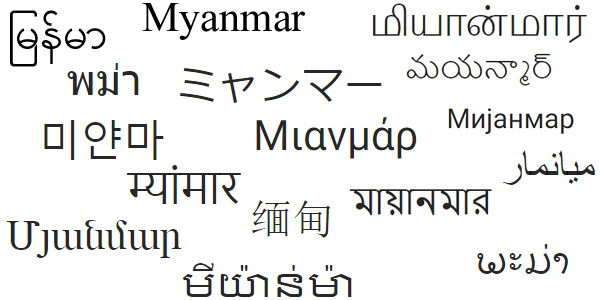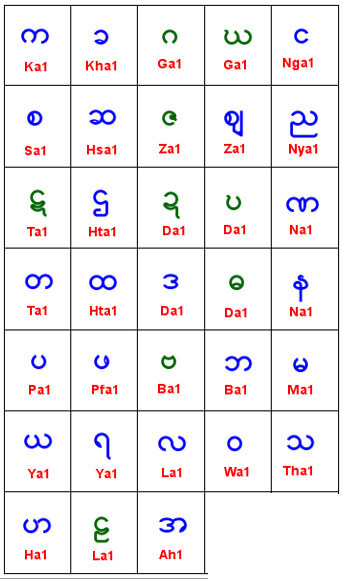
Estimates of Shan people range from four million to 30 million, with about half speaking the Shan language. The number of Shan speakers is not known in part because the Shan population is unknown. It is called Tai Yai or Tai Long in other Tai languages.
Useful phrases in myanmar language plus#
It has five tones, which do not correspond exactly to Thai tones, plus a "sixth tone" used for emphasis. Shan is a member of the Tai–Kadai language family and is related to Thai. It is also spoken in pockets of Kachin State in Myanmar, in Northern Thailand and decreasingly in Assam. The Shan language (written Shan: လိၵ်ႈတႆး, pronounced ( listen), spoken Shan: ၵႂၢမ်းတႆး, pronounced ( listen) or ၽႃႇသႃႇတႆး, pronounced Burmese: ရှမ်းဘာသာ, pronounced Thai: ภาษาไทใหญ่, pronounced ) is the native language of the Shan people and is mostly spoken in Shan State, Myanmar. Without proper rendering support, you may see question marks, boxes, or other symbols instead of Burmese script. For an introductory guide on IPA symbols, see Help:IPA. Without proper rendering support, you may see question marks, boxes, or other symbols instead of Unicode characters. ရှေ့, a fore part အိမ်ရှေ့မှာ, before the house.This article contains IPA phonetic symbols. A key to the whole is furnished in the following table:. There are also many words of Pali origin, in which consonants, final in a syllable, are subject to permutations somewhat similar to the above, and others of a peculiar character. before တ် or ပ်, are commonly pronounced kooat, tsooat and before န်, မ်, or (ံ), kooan, tsooan, &c. without any change in their pronunciation, except in two cases, viz: ဝ before တ် or ပ်, is commonly pronounce wŏ t not wat, and before န်, မ်, or (ံ), wŏn or woon not wan and consonants compounded with ဝ, as ကွ, စွ, &c. The final syllables, as here exhibited, are combined with any consonant simple or compound, as ကက် ket, ကျင် kyeen, &c. These permutations, as they occur in words of pure Burmese origin, are exhibited in the following table:. Final consonants generally assume a new and peculiar power, and also modify the preceding vowel. ဋ with ဌ subjoined is sometimes written ဌ, but frequently and more properly ဋ္ဌ. In elementary works, therefore, the double form may be well distinguished by subjoining a double tail, thus.

ည has two forms, ဉ (single), and ည (double). One consonant however is sometimes placed under another as a mere abbreviation, and does not therefore deprive the preceding consonant of its inherent vowel thus သ္မား is equivalent to သမား, and is to be read, not thma, but tha- ma.

The absence of the inherent vowel အ, is denoted by the mark (်) called that, signifying killed, placed above the consonant thus, က်, or by another consonant subjoined, thus က္ခ in which case the subjoined consonant becomes the initial of the next syllable, thus ကတ္တ, kat- ta.


When a consonant is deprived of its inherent vowel အ, and not furnished with the symbol of another, it becomes final in the syllable. The cerebrals and the letter ဠ are found in words only of Pali origin. Of the seven remaining consonants, five, viz ယ, ရ, လ, ဝ, and ဠ are liquids သ is properly a sibilant, but pronounced th, and ဟ is an aspirate. The pronunciation of the cerebrals and the dentals, though different in the Nagari, is the same in the Burmese. The first letter of each class is a simple articulation, smooth and soft the third is the same, rough and hard the second is the aspirate of the first the fourth, according to the Nagari system, is the aspirate of the third, but according to the Burmese pronunciation, is the same and the fifth is the corresponding nasal. The letters of the first or က class are gutturals ( ကဏ္ဍဇာ ) those of the second or စ class are palatals ( တာလုဇာ) those of the third or ဋ class are cerebrals ( မုဒ္ဓဇာ) those of the fourth or တ class are dentals ( ဒန္တဇာ) and those of the fifth or ပ class are labials ( ဩဋ္ဌဇာ). According to the foregoing arrangement, the first twenty-five consonants are distributed into five classes. The Burmese alphabet consists of ten vowels ( သရ), and thirty-two consonants ( ဗျည်း).


 0 kommentar(er)
0 kommentar(er)
